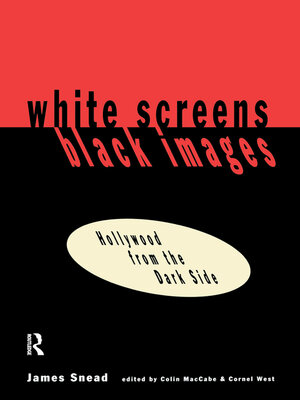
Sign up to save your library
With an OverDrive account, you can save your favorite libraries for at-a-glance information about availability. Find out more about OverDrive accounts.
Find this title in Libby, the library reading app by OverDrive.



Search for a digital library with this title
Title found at these libraries:
| Library Name | Distance |
|---|---|
| Loading... |
Hollywood's representation of blacks has been consistently misleading, promoting an artificially constructed mythology in place of historical fact. But how, James Snead asks, did black skin on screen develop into a complex code for various types of white supremacist discourse? In these essays, completed shortly before his death in 1989, James Snead offers a thoughtful inquiry into the intricate modes of racial coding in Hollywood cinema from 1915 to 1985. Snead presents three major methods through which the racist ideology within film functions: mythification, in which black images are correlated in a larger sceme of semiotic valuation where the dominant I needs the marginal other in order to function effectively; marking, in which the color black is repeatedly over-determined and redundantly marked, as if to force the viewer to register the image's difference from white; and omission—the repetition of black absence from positions of autonomy and importance. White Screens/Black Images offers an array of film texts, drawn from both classical Hollywood cinema and black independent film culture. Individual chapters analyze Birth of a Nation , King Kong , Shirley Temple in The Littlest Rebel and The Little Colonel , Mae West in I'm No Angel , Marlene Dietrich in Blonde Venus , Bette Davis in Jezebel , the racism of Disney's Song of the South , and Taxi Driver . Making skillful use of developments in both structuralist and post-structuralist film theory, Snead's work speaks not only to the centrality of race in Hollywood films, but to its centrality in the formation of modern American culture.







